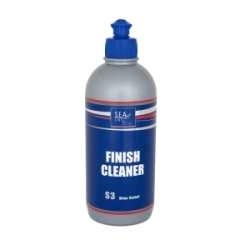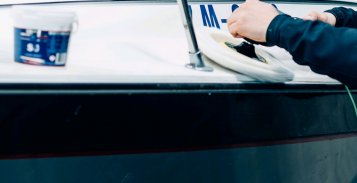
Analyzing the most common use of S3 liquid so far we have come to the conclusion that our customers use it primarily to clean the surface after polishing, and for protection is preferable to use wax S4.
We concluded to modified S3 liquid to meet the needs of our customers and produced the next generation S3 FINISH CLEANER product.
The new S3 FINISH CLEANER:
– removes the remnants of polishing dust from the surface,
– allows check quality of the polished surface
– used as final step of the polishing process to significantly emphasize the gloss.
Does not contain silicone, teflon and fillers.
Used together with other Sea-Line polishing materials, gives excellent results on gelcoats and lacquered surfaces.
More information : S3 Finish Cleaner

Désolé, cet article est seulement disponible en Polonais.

Come and join us at METSTRADE 2023, METSTRADE the best event for marine industry professionals, happening from November 15th to […]

Visit us and our production plant without traveling

New in the 2023 season is a new polishing wool The new black and white polishing pads in premium quality […]

Le produit destiné au remplissage des lacunes et à la liquidation des inégalités résultant des dommages ou des inégalités qui […]

La protection de la surface du bateau contre l’influence destructrice de l’osmose et de la corrosion dans des conditions difficiles

La protection contre l’eau et contre l’influence néfaste des rayons UV

La protection du fond du bateau contre l’encrassement par les algues et contre les coquillages. La protection contre l’eau

Une élimination efficace des fissures, le rafraîchissement de la couleur et du brillant du gel coat ou du vernis

Préparations spéciales pour le nettoyage et la remise en vigueur

Laminage, collage et de remplissage des fissures dans gelcoat

Beaucoup de produits utiles pour les travaux de construction d’un bateau